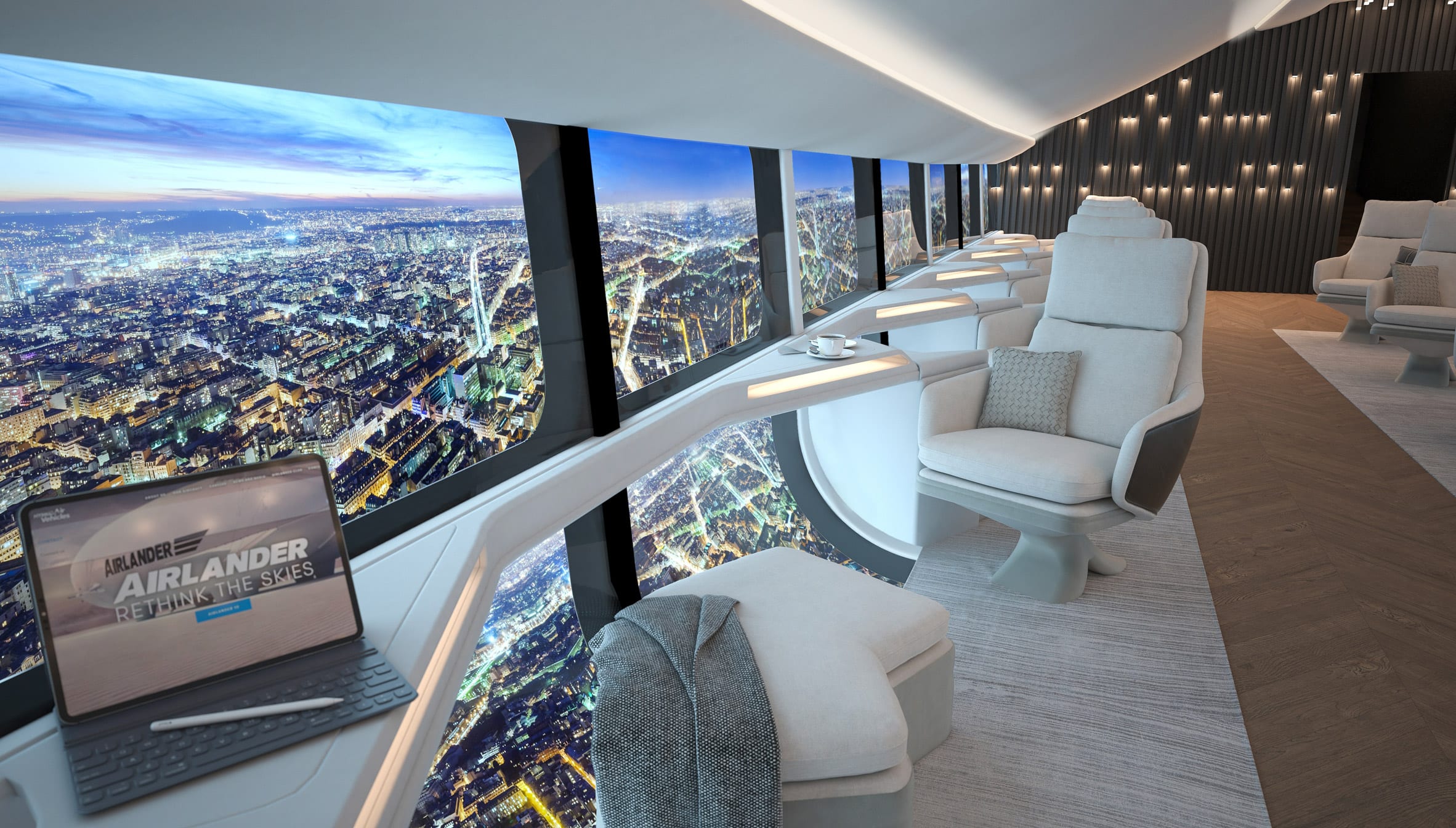Electric airship designed to replace short-haul plane trips


UK manufacturer Hybrid Air Vehicles has designed a hybrid-electric version of Airlander 10, an airship that could provide a less carbon-intensive alternative to short-haul flights.
Hybrid Air Vehicles (HAV), which is based in Bedford, has designed a dirigible that could take 100 passengers on popular, short routes such as Liverpool to Belfast.
The company calculates that using their airship would produce "75 per cent fewer emissions than conventional aircraft in similar roles".
The Airlander 10 went viral in 2016 when photographs released of its test flight earned it the nickname of the "flying bum". Subsequent redesigns have made it svelter and less peach-shaped.
 Airlander 10 went viral in 2016 when it was nicknamed the "flying bum"
Airlander 10 went viral in 2016 when it was nicknamed the "flying bum"
The hybrid-electric Airlander 10 would be filled with helium and propelled by two electric motors powered by hydrogen fuel cells at the front and two combustion engines at the rear.
"Using lighter-than-air technology means that Airlander 10 requires significantly less power to generate lift and fly," a spokesperson for HAV told Dezeen.
"Airlander 10, therefore, produces far fewer emissions even before electrification."
 A new hybrid-electric version could have less carbon impact
A new hybrid-electric version could have less carbon impact
HAV calculates that a passenger's individual carbon impact for a flight between Barcelona and Palma de Mallorca would be 4.5 kilograms on an Airlander 10, versus 53 kilograms taking the same trip on a traditional aeroplane.
Although airships are slower than traditional fixed-wing aeroplanes, HAV pointed out that they can deliver passengers closer to their final destination as they can take off and land on any flat surface – including water.
"Over shorter routes, this is balanced by Airlander 10's ability to operate much closer to the final destination and fly point-to-point," said HAV.
"In some cases, this makes the total journal time very similar or only slightly longer but with all the benefits of comfortable travel with very low emissions."
 The airship could be a less carbon-intensive alternative to inter-city flights
The airship could be a less carbon-intensive alternative to inter-city flights
Aeroplanes power their engines by burning aviation fuel, which is typically petroleum-based. Jet fuel, for example, uses kerosene – a combustible hydrocarbon made from petroleum.
Filling airships with helium makes them light enough to float, as helium is lighter than air, so the engines are only required to direct the craft rather than keep it airborne.
Although helium is the second-most abundant element in the universe after hydrogen, it is a finite resource on earth because it floats away out of the atmosphere.
 Airlander 10 would produce 75 per cent fewer emissions than a jet plane
Airlander 10 would produce 75 per cent fewer emissions than a jet plane
It is the only element on Earth that is completely non-renewable and is only generated deep underground via the radioactive decay of uranium and thorium.
However, HAV claims that Airlander 10 would not significantly deplete the planet's resources.
"Although helium is a finite resource, there are ample reserves and new helium fields are being identified now," said the company.
"Even with 600 aircraft in use in the world, Airlander 10s would make up just 1 per cent of the world's annual helium consumption."
HAV is partnering with British aviation business 2Excel Aviation to offer Airlander 10 to airlines and cruise companies.
"It is HAV's plan to produce at least 12 aircraft per year," said the company.
More low-emissions aircraft design includes these three concepts for zero-emission commercial aircraft by Airbus and a V-shaped aircraft by Dutch airline KLM and TU Delft.
The post Electric airship designed to replace short-haul plane trips appeared first on Dezeen.
#all #transport #design #news #uk #aircraft #electricaircraft #electricvehicles #airlander10theflyingbum
